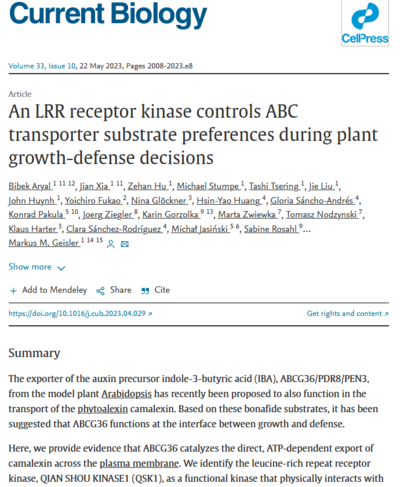Receptor kinase sets the switch from growth to defense.
In collaboration with IPB scientists, an international team has recently provided evidence that the Arabidopsis ABCG36 exporter transports not only the auxin precursor indole-3-butyric acid (IBA) but also the phytoalexin camalexin out of the cells. This ATP-dependent export of the phytoalexin requires phosphorylation of the ABC transporter, as impressively demonstrated by the expert team through the discovery of the corresponding receptor kinase, the QIAN SHOU KINASE1 QSK1. They report that the export of IBA is suppressed by the phosphorylation of the ABCG36 exporter, which leads to the increased discharge of camalexin and thus to the resistance of the plant to certain pathogens. Consequently, the ABCG36 transporter is increasingly emerging as an important control point between growth and defense scenarios in Arabidopsis. The scientists summarize their findings on the substrate preference of the transporter in a first model. In the unphosphorylated state, ABCG36 primarily exports IBA from the cell, which tends to accelerate growth processes in the plant. Pathogen attack and the corresponding activation of early defense mechanisms causes the transporter to become phosphorylated, which switches the balance towards camalexin transport and pathogen control.


